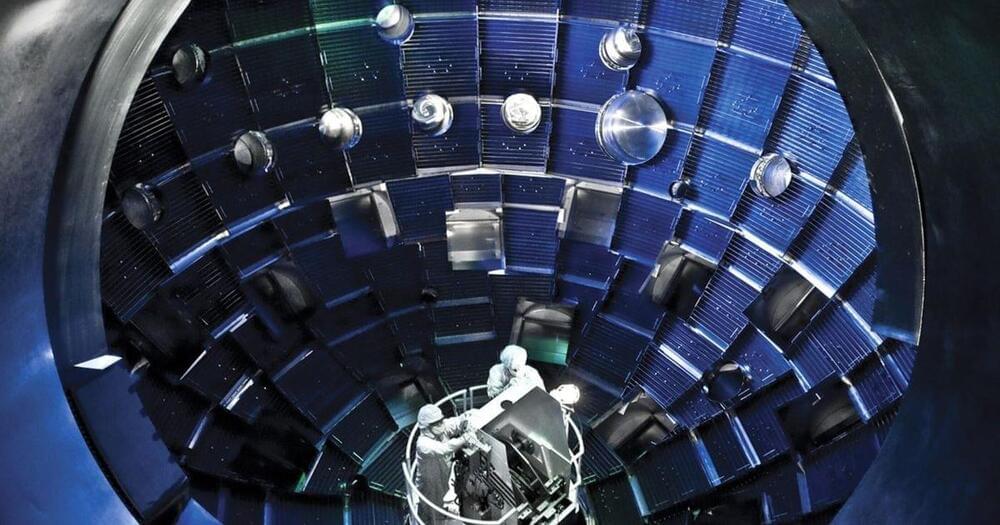Using data from the OSIRIS-REx spacecraft, NASA has updated its predictions about the Bennu asteroid impacting Earth.
Get the latest international news and world events from around the world.
China’s Answer to the Aging International Space Station: The Tech Behind Tiangong | WSJ
China says its spacecraft has more advanced technology.
While the future of the nearly 23-year-old International Space Station remains uncertain after 2,024 China says its newly equipped Tiangong station will be up and running by next year. WSJ unpacks the design and technology of both space stations. Photo: CCTV; NASA
More from the Wall Street Journal:
Visit WSJ.com: http://www.wsj.com.
Visit the WSJ Video Center: https://wsj.com/video.
On Facebook: https://www.facebook.com/pg/wsj/videos/
On Twitter: https://twitter.com/WSJ
On Snapchat: https://on.wsj.com/2ratjSM
#WSJ #China #NASA

Futur-E Hydrofoil Electric Boat Flies on Water Like a Supercar, Oozes Sophistication
Electrification is slower in coming to naval design, but CentrostileDesign is already imagining the luxury boat of tomorrow. It is fully electric, incredibly fast, completely sustainable and very dramatic.
Introduction to Biochemistry
#Biology #biochemistry #Biochemist #biotech #bio
This video explains introduction to biochemistry.
Thank You For Watching.
Please Like And Subscribe to Our Channel: https://www.youtube.com/EasyPeasyLearning.
Like Our Facebook Page: https://www.facebook.com/learningeasypeasy/


Razer bug lets you become a Windows 10 admin by plugging in a mouse
A Razer Synapse zero-day vulnerability has been disclosed on Twitter, allowing you to gain Windows admin privileges simply by plugging in a Razer mouse or keyboard.
Razer is a very popular computer peripherals manufacturer known for its gaming mouses and keyboards.
When plugging in a Razer device into Windows 10 or Windows 11 the operating system will automatically download and begin installing the Razer Synapse software on the computer. Razer Synapse is software that allows users to configure their hardware devices, set up macros, or map buttons.

Prioritizing humanity ahead of profits through NFTs
Related: Ethereum’s London hard fork sets ETH on a more deflationary path
For some, it’s easier to burn money than to coordinate and fund public goods. As a confessed humanist, that’s massively disappointing to me. This fundamental shift would have been tremendous support for research and development and innovation that maximizes community benefit and the thriving (rather than survival) of more transparent nonprofits. Developments in this space would make unbelievable strides forward for Ethereum and broader society.
The building blocks are here for humans to coordinate and reward those who create a lasting impact. NFTs, DAOs and retroactive public funding make it easier to put humanity first. We’re at a monumental moment for pro-social organizations, where public goods like ending world hunger, championing human rights and economic empowerment can be designed for the long run.
ExoMars 2022 mission in final testing, ESA & Roscosmos prepare for approaching launch
The European Space Agency (ESA) and Roscosmos are preparing for the2022launch of the next mission in their joint ExoMars program, which is currently undergoing final testing before shipment to Kazakhstan for a launch in September next year.
The2022astrobiology mission will see the long-awaited Rosalind Franklin rover land on Mars with the help of the Russian Kazachok lander. The lander will also perform experiments on the Martian surface after deploying Rosalind Franklin as the two craft work together to search for signs of past life on the Red Planet.
After construction delays, missed Martian transfer windows, and the COVID-19 pandemic, Rosalind Franklin, Kazachok, and the other ExoMars2022mission systems have been completing important testing milestones ahead of shipment to Kazakhstan for launch on a Proton rocket next year.
